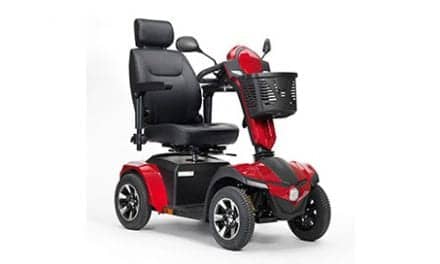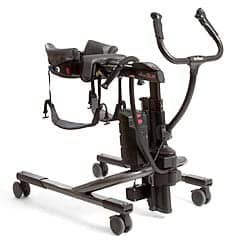A long-term evaluation of bone-anchored leg prostheses was published recently in the Journal Of Bone And Joint Surgery.
After above-knee amputation, a prosthesis can be placed directly in the thigh bone (osseointegration). Although the procedure tends to have stoma problems, they can usually be treated with simple measures. In addition, the osseointegration implant system leads to a permanent improvement in mobility and quality of life, according to researchers from Radboud University Medical Center.
Attachment Options After Amputation
Bone-anchored prostheses offer a number of important advantages over traditional “socket” prosthetics, which must fit snugly over the stump and be held in place by a suction or suspension system. To place a bone-anchored prosthesis, a 14 cm steel pin must first be inserted into the remaining portion of the femur bone.
In a few weeks this coated pin grows into the bone, after which an adapter is attached that protrudes a few centimeters through the skin (via a stoma). The wearer can attach or detach the artificial leg to this part with a quick coupling connector.
Improvements Apparent Despite Complications
In this study, clinical researcher David Reetz and surgeon Jan Paul Frölke, along with their colleagues from the rehabilitation and orthopedics department at Radboudumc, looked at 42 patients who had received such a prosthesis, and performed a follow-up study of the 5 years after surgery. A full follow-up was obtained in 39 of the 42 patients.
The most common complication was infection, in 77% of patients – mostly superficial and in the first 2 years. The vast majority (95%) were mild to moderate infections that did not require surgical treatment. Fourteen patients experienced irritation around the stoma where the pin protrudes through the skin, and they underwent minor surgery to re-shape the soft tissue.
After receiving their implants, patients increased the number of hours per week they could use their prosthesis: from an average of 56 hours with their previous socket prosthesis to 101 hours with the bone-anchored prosthesis. The bone-anchored prostheses also improved health-related quality of life (HRQoL): on a 100-point scale, the average score increased from 33 to 75, a media release from Radboud University Medical Center explains.
“We received a lot of skeptical reactions from colleagues who didn’t believe in it, even after we published excellent results after 2 years of follow-up. Thanks to the trust that patients placed in us, we have continued and we can now conclude that this is the new gold standard in people with sleeve-related problems including about half of all people with a leg amputation.”
— Jan Paul Frölke
Next Steps
This study adds to existing evidence showing other benefits of bone-anchored prostheses, including more natural and stable control of the prosthesis, improved walking and sitting conditions, and avoidance of the many problems associated with the sleeve prosthesis, such as blisters, the release continues.
“Next steps in clinical research should include studies aimed at optimizing the stoma using a unified registry system, and further developing the implant design and safety of bone-anchored prostheses in patients with vascular disease. This is by far the largest group but has not been taken into account in this study.”
— David Reetz
[Source(s): Radboud University Medical System, EurekAlert]
Related Content:
Earlier Prosthetic Care Lowers Healthcare Costs, Per IMPACT Study
Robotic Prosthetics AI Feature Computer Vision and Uncertainty
Synergies for Successful Prosthetics





